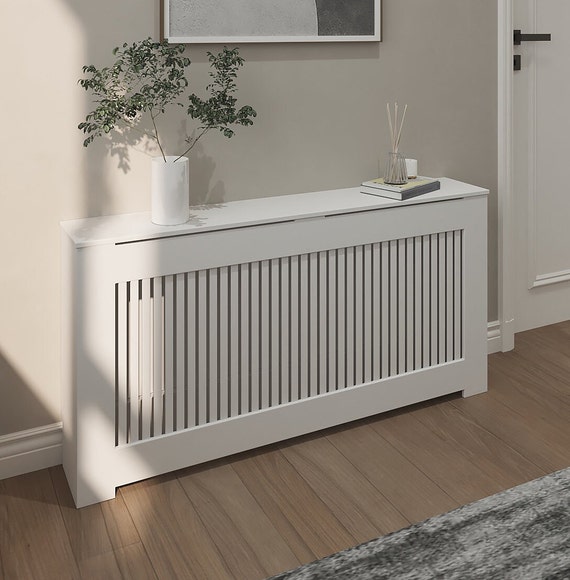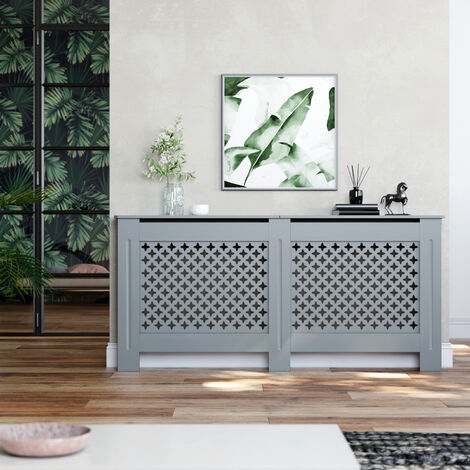Transform Your Space with a Stylish Radiator Cover
Transform Your Space with a Stylish Radiator Cover
Blog Article
Radiator Covers: Understanding Products, Layouts, and Benefits
Radiator covers offer both visual and functional functions within a home, offering a variety of products such as metal, mdf, and wood to fit various layout choices. Choosing the ideal radiator cover includes recognizing the nuances of materials, layouts, and their associated benefits.
Kinds Of Products


Wood covers, often crafted from hardwoods such as oak or maple, give a timeless, warm look that complements conventional insides. Their sturdiness and ability to be tarnished or repainted contribute to their adaptability. Steel covers, generally made from steel or aluminum, are preferred for their effectiveness and modern look, commonly featuring streamlined lines that improve contemporary rooms.
MDF, a produced timber product, is prominent for its cost-effectiveness and simplicity of customization. It can be painted or finished to match existing decoration while using a smooth surface area. Plastic covers, while much less common, are immune and lightweight to dampness, making them ideal for humid settings.
Inevitably, the selection of product for a radiator cover should align with the property owner's style choices, practical needs, and the specific environment where the cover will certainly be installed. Each product supplies an unique character, guaranteeing that there is a choice to suit every preference and setup.
Popular Layout Styles
Emphasizing aesthetic allure, popular style styles for radiator covers mirror a variety of preferences and interior style trends. Conventional styles commonly include intricate woodwork and elaborate describing, making them suitable for timeless or vintage-inspired interiors. These covers generally incorporate sculpted aspects, giving a cozy and inviting feel to any kind of area.
In comparison, contemporary designs focus on minimalist aesthetic appeals, identified by tidy lines and understated elegance. Products such as metal or streamlined timber with a smooth finish are generally utilized, allowing these covers to mix effortlessly into modern-day areas. Industrial designs, on the various other hand, accept resources like subjected metal and concrete, including a bold declaration to loft or city settings.
For those seeking an unique touch, bespoke styles supply personalization alternatives that deal with private choices, enabling home owners to select colors, patterns, and products that complement their decoration. Additionally, farmhouse-style covers integrate rustic components, featuring distressed timber and easy types that stimulate a comfortable, nation beauty.
Benefits of Radiator Covers
Radiator covers not only improve the visual appeal of a room however additionally supply several useful advantages that make them a worthwhile addition to any kind of home. Among the key advantages is safety, especially in families with youngsters or pet dogs. Covers minimize the threat of burns from warm radiator surface areas, ensuring a safer atmosphere.
Furthermore, radiator covers can enhance energy performance. By routing warmth right into the area rather than permitting it to run away, they help maintain a consistent temperature, reducing heating costs over time. This is especially advantageous in older homes where radiator systems may be less reliable.
Another remarkable advantage is noise decrease. Radiators can often generate undesirable sounds during operation, and covers can aid smother these sounds, adding to a much more tranquil living room. In addition, radiator covers can be useful, providing added storage space or screen space, thereby taking full advantage of the utility of often-overlooked locations.
Last but not least, they can safeguard radiators from dust and particles, which can impede efficiency and boost upkeep requirements. With these integrated benefits, radiator see covers become a practical solution for improving both the functionality and design of any kind of home environment.
Installation Factors To Consider
Setting up radiator covers requires careful consideration to make certain both performance and safety (Radiator cover). Initially, examine the dimensions of your radiator and the surrounding space to make certain a correct fit. Precise dimensions are important; an uncomfortable cover can obstruct warm flow or produce safety and security risks
Following, evaluate the material of the cover. While timber offers aesthetic allure, steel options might give better longevity and heat resistance. Think about the weight of the cover too; heavier covers might require extra assistance or supports to avoid sagging or damages with time.
Ventilation is one more essential aspect. Covers need to include ample airflow to avoid getting Bonuses too hot and keep efficient heating. Search for styles with slats or openings that permit warm to circulate without obstruction.
In addition, guarantee that the cover is firmly placed to prevent accidents, particularly in homes with pets or kids. Radiator cover. It's a good idea to comply with the supplier's installment standards closely and, if necessary, seek advice from an expert for complicated setups
Upkeep and Treatment Tips
Appropriate upkeep of radiator covers is crucial for ensuring their longevity and optimal performance. Normal cleansing is essential; dust and particles can gather, blocking air flow and minimizing warm effectiveness. Use a soft, wet towel or a microfiber duster to carefully wipe the surface, staying clear of rough chemicals that might damage the finish. For repainted or timber covers, think about a suitable gloss or safety covering to preserve their appearance.
Inspect the covers regularly for signs of wear or damages, resource such as fractures or peeling paint. Dealing with these issues quickly can stop further wear and tear. Make certain that the covers are securely attached and look for any type of loosened screws or fittings, as resonances from the radiator can loosen them in time.
In cooler months, prevent positioning heavy things or decorative things on top of the radiator covers, as this can restrain warm circulation and cause unneeded anxiety to the structure. Lastly, consider seasonal upkeep by getting rid of the covers for extensive cleansing and evaluation throughout warmer months when the heating unit is inactive. Embracing these straightforward care suggestions will enhance the performance and aesthetic charm of your radiator covers, ensuring they offer their purpose effectively for several years ahead.

Verdict
In summary, radiator covers serve as aesthetic and practical improvements to residential areas. Cautious consideration of installment and upkeep further makes sure the long life and effectiveness of radiator covers in any home atmosphere.
Radiator covers offer both useful and visual purposes within a home, providing a variety of products such as mdf, wood, and metal to suit numerous style choices. Selecting the right radiator cover entails comprehending the subtleties of materials, layouts, and their connected benefits.Highlighting aesthetic appeal, popular design styles for radiator covers reflect a variety of tastes and interior style trends.Radiator covers not only enhance the aesthetic appeal of a room but also offer several practical benefits that make them a worthwhile enhancement to any kind of home. Take into consideration the weight of the cover as well; larger covers might need extra support or reinforcements to avoid drooping or damages over time.
Report this page